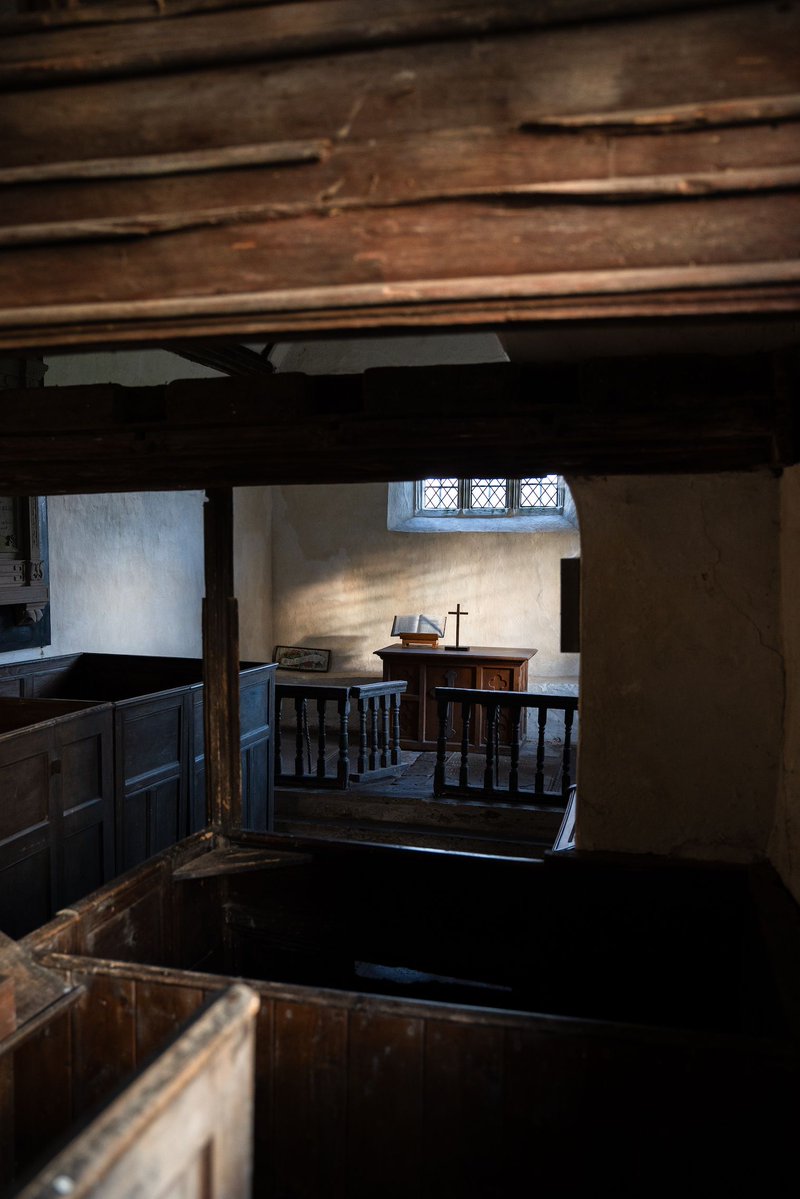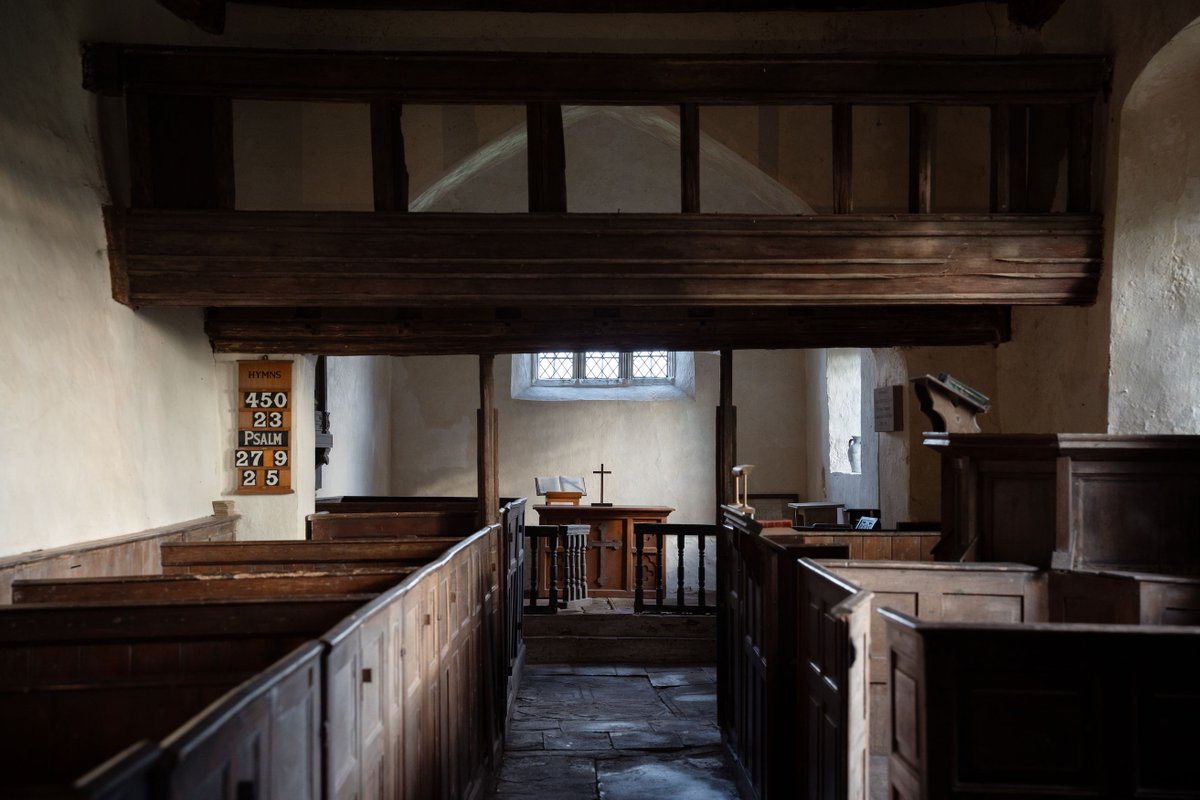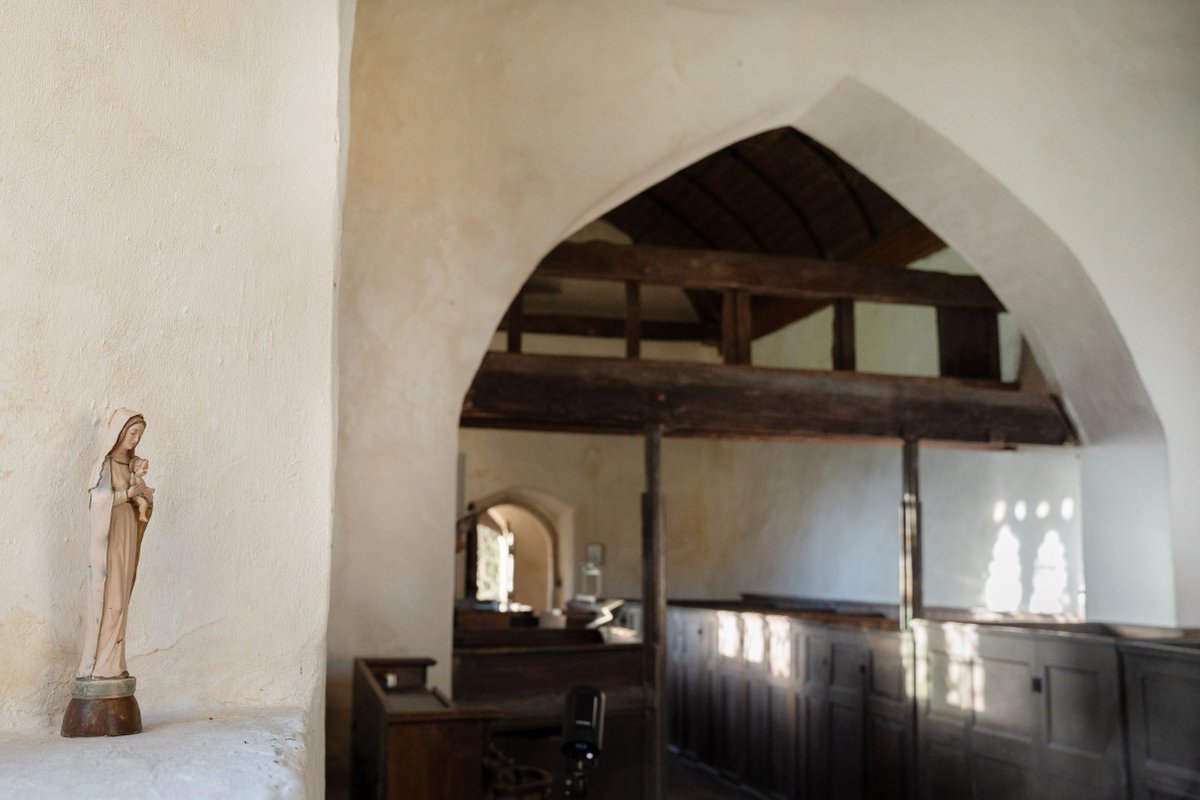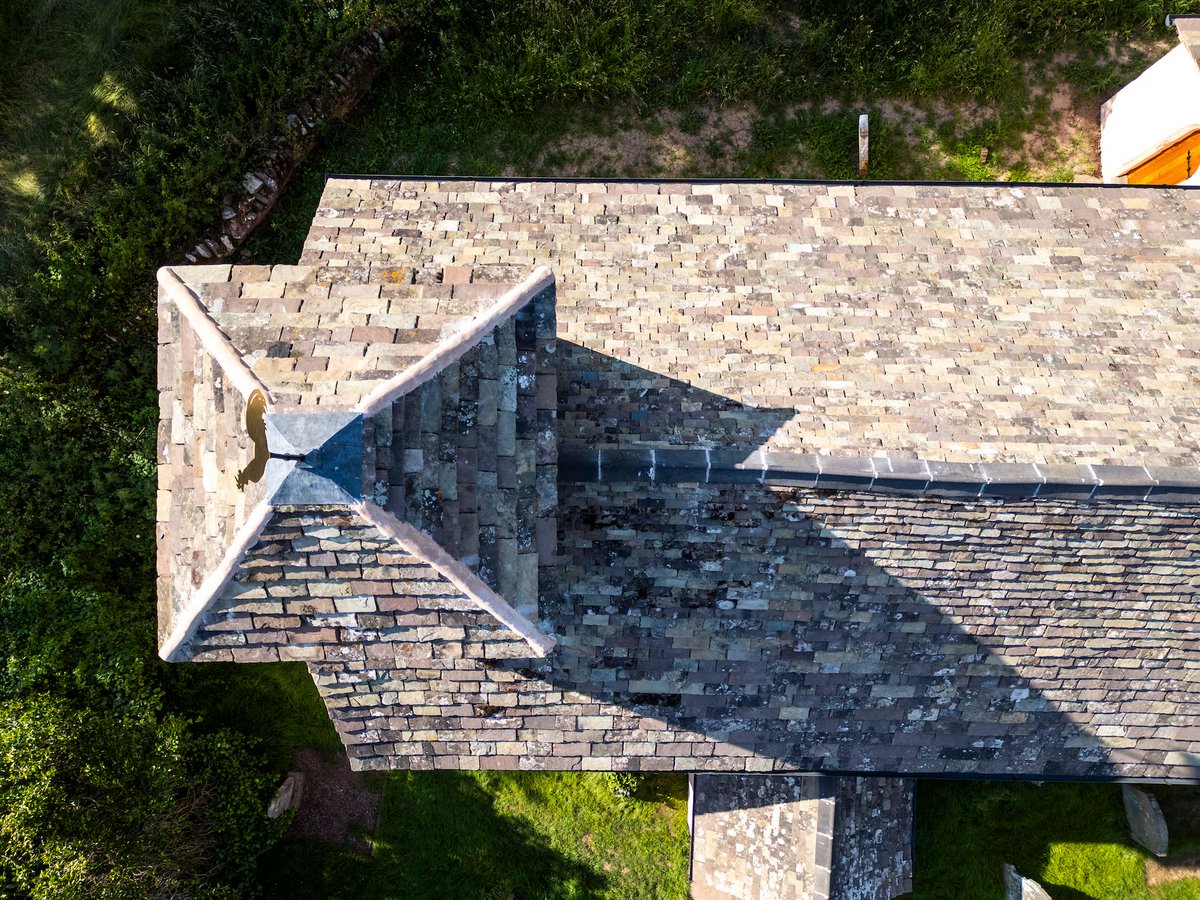St Helen’s closed in 2007. For thirteen years, it waited. Weary and forlorn, but magisterial in the mudstone outcrop west of Howden.
Inside, the walls are cracked and crumbling, plaster and paint are falling off in great sheets to reveal glimmers of a colourful past.
#thread
Inside, the walls are cracked and crumbling, plaster and paint are falling off in great sheets to reveal glimmers of a colourful past.
#thread

Given the dereliction at St Helen’s, Barmby on the Marsh, only fragments of the Victorian decorative schemes survive. However, we have been able to pick out some layers, and gain an idea of how this church may have looked in the 1850s and 1870s.
2/
2/

The earliest surviving scheme is simple and sober. It comprises a pinkish-brown dado to approximately a metre in height. Then a coat of powder blue runs to the ceiling. Just above the dado, a stencil scheme of light brown of repeating palmettes flows around the entire nave.
3/

3/


After this, a more energetic scheme was applied, featuring the quintessential Victorian church palette of greens, reds and browns. The walls are dark green and apple green. The frieze features a stamped glossy brown foliage flourish framing a crimson rose.
4/

4/


I particularly love this scheme as you can see the stipple of the stencil stamp, and sometimes stencil brush hairs still trapped in the paint.
5/
5/

Over the chancel arch, brittle vestiges of an alternating pattern of fleur de lys and monstrances is pressed out in gold-leaf.
6/
6/

We took the church into our care last autumn. It needs a *lot* of work. Previously, we’ve talked about the severe structural issues. Sadly, our budget doesn’t run to reinstating a stencil scheme, however, the painted layers remain in situ, ready for further research one day.
7/
7/

I did those little mock-ups myself to give ye an idea of what we think the schemes were. They’re far from professional or perfect, but please don’t judge me too harshly!
8/
8/
• • •
Missing some Tweet in this thread? You can try to
force a refresh






















